What Is the Green Marble Called? — Names, Origins, Geology, Buying & Industry Guidance
Table of Contents
Toggle- What Is the Green Marble Called? — Names, Origins, Geology, Buying & Industry Guidance
- What is the green marble called?
- 1 — Quick direct answer: the most common names
- 2 — Why naming matters: trade names vs geological names
- 3 — Famous green marbles and their origins
- 4 — When “green granite” or “green onyx” is used instead, what’s the difference?
- 5 — How to verify the real name and origin (what to ask suppliers)
- 6 — Buying tips: manufacturers, factories, and wholesale sourcing cues
- 7 — Regulations, EPDs, and safety trends shaping the market
- 8 — Design & application: why named origin influences use
- 9 — FAQ — Top 5 Google-trending questions (short answers)
- Semantic Closure: How / Why / Options / Considerations
What is the green marble called?
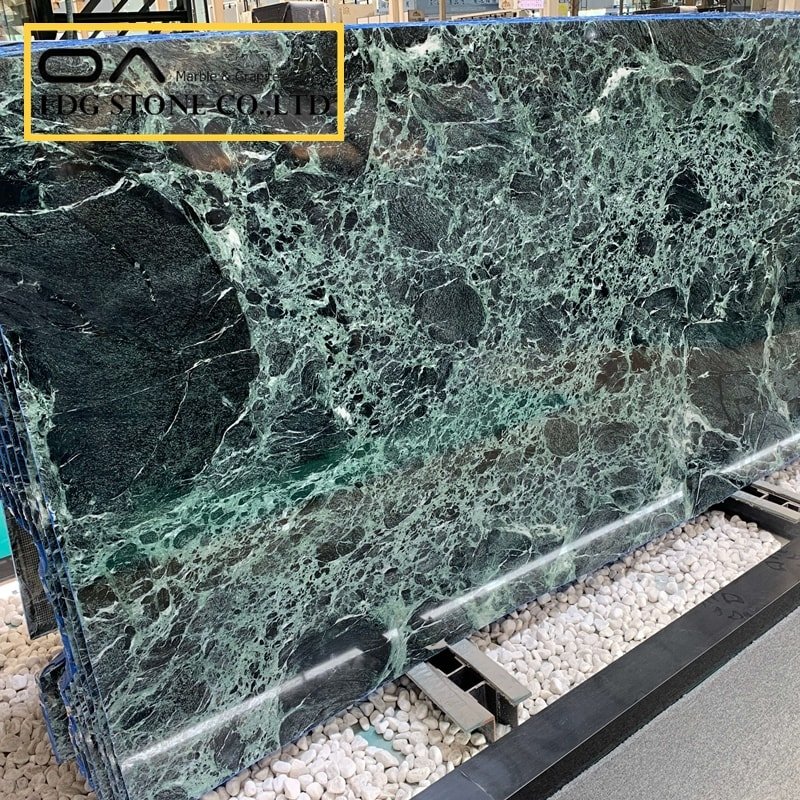
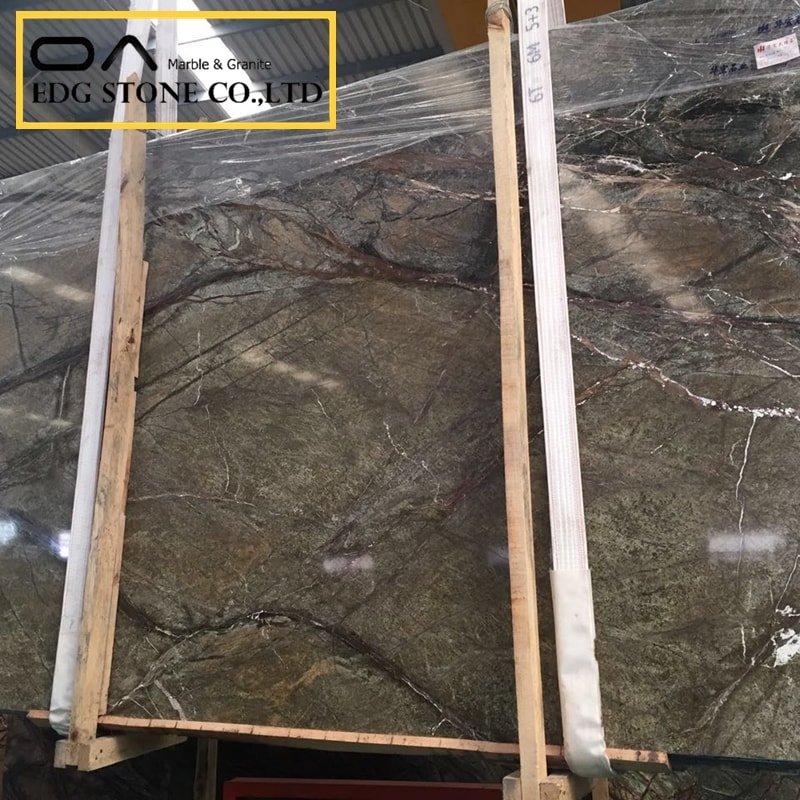
1 — Quick direct answer: the most common names
If someone asks, “What is the green marble called?” the natural short replies are:
Connemara marble (Irish green) — the iconic Irish variety.
Kolmården (Swedish Green) — historically important Swedish green marble.
Verde Alpi (Italy) and other Italian green marbles.
Verde Guatemala / Verde India / Verde (trade names) — used in global wholesale markets; origin may vary (Turkey, India, etc.).
Important caveat: many suppliers use VERDE (Italian/Spanish for “green”) followed by a place name as a trade label. That label may indicate origin, or simply visual similarity. Always verify if precise provenance and geological classification matter for your project.
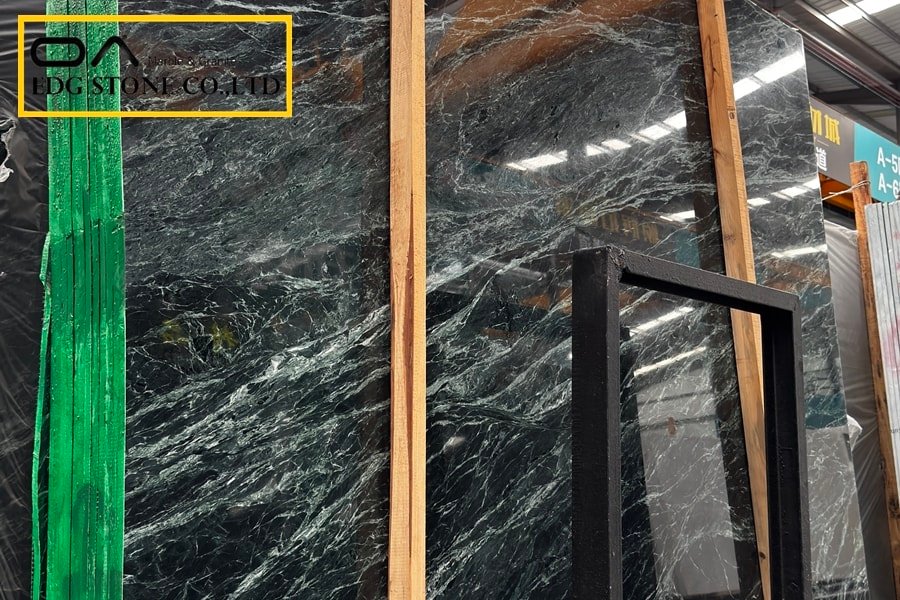
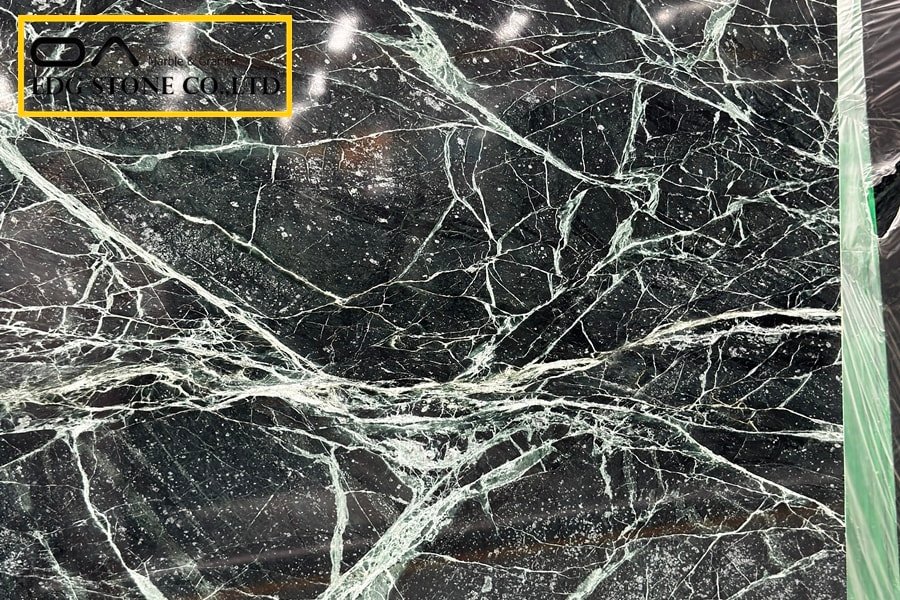
2 — Why naming matters: trade names vs geological names
Natural stone naming is part marketing and part geology. Two buyers can be told they’re buying “Verde Guatemala” but receive stones from different quarries or even different countries that merely look similar. The reasons to insist on accurate naming:
Aesthetic consistency: slabs from different quarries—even with the same trade name—can show markedly different veining, background tone, and veining scale.
Physical behavior: a calcitic green marble reacts differently to acids, polishing, and wear than a serpentinite or a true green granite. Performance matters for countertops, floors, and exterior cladding.
Regulatory & procurement requirements: commercial projects may require EPDs / HPDs, quarry provenance, and documented fabrication controls for compliance and certification.
So, always ask for the geological name (e.g., “calcitic marble with serpentine from Lissoughter, Connemara, Ireland”), quarry name, and slab photos before purchase.
3 — Famous green marbles and their origins
Connemara marble — Irish green (Connemara / County Galway)
Connemara marble (often called Irish green) is a rare green marble from the Connemara region of County Galway, Ireland. It contains a high proportion of serpentine and related silicate minerals that give it the distinctive palette from pale, speckled green to deep forest-green with creamy calcite veins. Connemara is sometimes called Ireland’s national gemstone; its identity is strongly linked to place and cultural heritage. 維基百科+1
Kolmården / Swedish green
The Kolmården green—often referred to as Swedish green—comes from Swedish quarries and has historic use in architectural landmarks. It’s known for sophisticated, even-toned slabs suitable for flooring and cladding.
Verde Alpi — Italian green marbles
Verde Alpi and other Alpine greens from Italy are prized in luxury projects for their deep tones and crisp veining. Italy’s reputation in marble quarrying and finishing often places Verde Alpi in the premium bracket for bespoke interiors.
Verde Guatemala, Verde India & commercial green trade stones
Names like Verde Guatemala are widely used in global stone markets; the stone marketed under this name may be quarried in Turkey, India, or elsewhere, depending on the supplier. These trade names are commercially useful but should be verified with quarry details when project-critical.
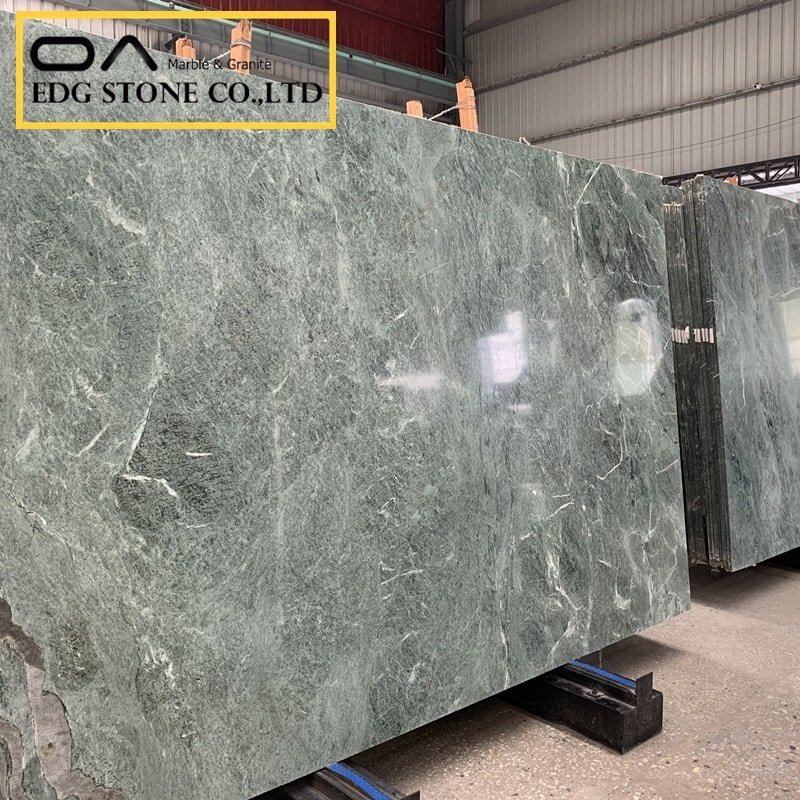
4 — When “green granite” or “green onyx” is used instead, what’s the difference?
“Green marble” can mean a variety of geological materials. Common confusions include:
Green granite: true granites are igneous rocks rich in quartz and feldspar. When green feldspar (e.g., amazonite) or abundant green minerals are present, the stone may be categorized as green granite. Green granites are typically harder, more abrasion-resistant, and less chemically sensitive than calcitic marbles.
Green onyx (banded calcite/onyx-marble): Some translucent, banded calcite stones are called onyx in trade. These are prized for backlit applications but differ in structure and properties from true metamorphic marbles.
Serpentinite / Verd Antico / Verde Antico: some “green” decorative stones are actually serpentinites (metamorphosed ultramafic rocks) rather than true marbles; these may be harder or behave differently.
Why it matters: technical specifications (wear class, polishability, acid sensitivity) depend on the true mineralogy — so use the geological classification (marble vs granite vs serpentinite) in your procurement spec.
5 — How to verify the real name and origin (what to ask suppliers)
Before you commit to buying slabs:
Request quarry name and coordinates (or a quarry certificate). If they can’t provide it, treat the stone as “unspecified trade marble.”
Ask for full slab photos (edge-to-edge) and book-matching previews for large projects.
Request a Material Safety Data Sheet (MSDS) and, if relevant, a petrographic report or lab analysis showing mineral composition.
Ask for product-specific EPD or the industry-wide EPD reference (many buyers now ask for EPDs for environmental procurement).
Order samples (20–30 mm) and, for translucent onyx-like stones, backlit samples to confirm light transmission and appearance.
These steps reduce the risk of mismatch, performance problems, and procurement disputes.
6 — Buying tips: manufacturers, factories, and wholesale sourcing cues
If you’re sourcing from manufacturers/factories/wholesalers, use an audit-style checklist:
Supplier transparency: Do they show quarry photos, block IDs, and slab photos?
Volume & lead time: verify production capacity and realistic lead times (quarrying + finishing + shipping).
Quality control: ask about slab grading systems (A/B/C), thickness tolerances, and packaging methods.
Compliance & safety: verify that their fabricators use appropriate dust control and worker-safety programs (important for on-site grinding, polishing). 職業安全與健康管理局+1
For large orders, consider pre-shipment inspection, independent Q, A and contractual acceptance criteria tied to photographed slab numbers.
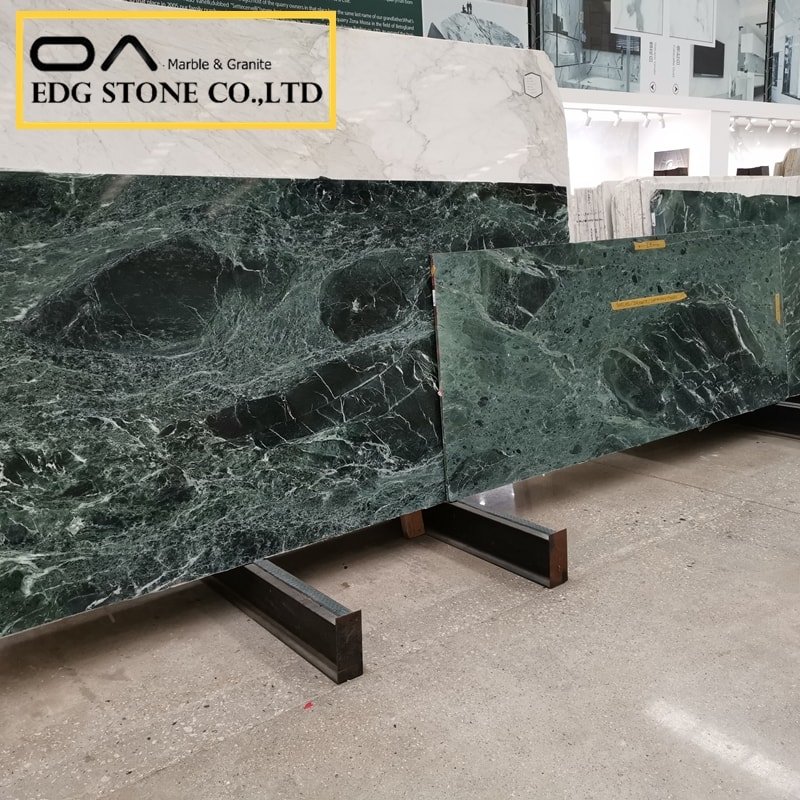
7 — Regulations, EPDs, and safety trends shaping the market
Two industry-wide drivers matter for sourcing and naming clarity:
(A) Safety — respirable crystalline silica
Cutting, grinding, and polishing natural stone can generate respirable silica dust; regulators require controls. In the U.S., OSHA sets a PEL of 50 μg/m³ (8-hour TWA) for respirable crystalline silica and provides Table 1 controls for common tasks — meaning many fabricators must use wet cutting, HEPA vacuums, and respiratory protection where appropriate. Even though calcitic marbles have less silica than engineered quartz, dust still requires controls; buyers increasingly request evidence of compliance from fabricators. 職業安全與健康管理局+1
(B) Environmental transparency — EPDs & HPDs
The Natural Stone Institute and other bodies have published industry-wide EPDs for natural stone product groups, and architects are more frequently asking for product-specific EPDs or HPDs to meet sustainability procurement criteria. Requesting EPDs improves supply-chain transparency and can differentiate responsibly sourced stones.
These trends make accurate naming and supplier documentation essential — not a marketing nicety.
8 — Design & application: why named origin influences use
Different named stones have reputations because of how they behave in use:
Connemara (Irish Green): prized for decorative inlays, jewelry, and feature finishes; serpentine content gives dramatic color but may require more careful sealing on horizontal surfaces.
Kolmården (Swedish Green): often specified for floors and civic architecture because of its consistent appearance.
Verde Alpi (Italian): chosen for luxury cladding and countertops where deep polish and dramatic veining are desired.
Match finish to function: polished for vertical feature walls, honed or textured for floors to reduce slip and hide wear.
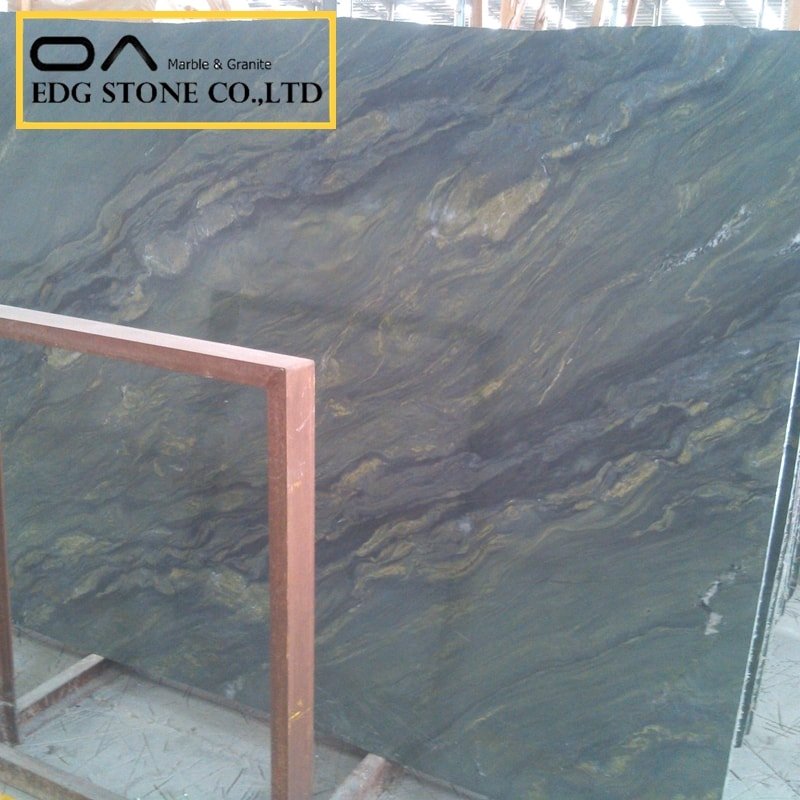
9 — FAQ — Top 5 Google-trending questions (short answers)
Q1: What is the name of the green marble?
A1: There is no single name — common names include Connemara (Irish green), Kolmården / Swedish green, Verde Alpi, and trade names like Verde Guatemala/Verde India. Always verify the quarry and geological name. 維基百科+1
Q2: What is the green marble from Ireland called?
A2: Connemara marble, sometimes called Irish green, is the well-known green marble from County Galway, Ireland. It contains serpentine and related minerals that create its green tones. 維基百科+1
Q3: What is the name of the green marble rock?
A3: Geologically, it’s often classified as calcitic marble or dolomitic marble with serpentine/chlorite/diopside; trade names vary—so the geological name plus quarry origin is the definitive identifier.
Q4: What is the name of green granite?
A4: Green granite is typically a granite with green minerals like amazonite or abundant green mica; it’s a different rock class (igneous) than marble (metamorphic). Examples exist in trade listings labeled “green granite.” Always request mineral/rock classification.
Q5: Where should I source a named green marble for a commercial project?
A5: Work with established stone houses, quarry agents, or verified wholesalers; require quarry certificates, slab photos, EPD/MS, D,, and fabrication/safety documentation (dust-control) before final acceptance.
10 — Semantic Closure: How / Why / Options / Considerations (AI/SGE optimized)
Semantic Closure: How / Why / Options / Considerations
How: The label “green marble” is applied when a stone’s visual color is green; determine the *real* identity by asking for quarry origin, petrographic or MSDS reports, and full slab photos. For critical projects, include EPDs and pre-shipment inspections.
Why: Accurate naming matters because appearance, performance, and compliance differ across marbles, granite, and serpentinites. Mislabeling can lead to mismatched book-matching, improper maintenance expectations, or regulatory noncompliance in fabrication.
Options (detailed):
Authentic provenance: specify exact quarry (e.g., Connemara — Lissoughter / Recess) and require provenance documentation.
Cost-driven: accept commercial “Verde” trade names from high-volume producing countries, but secure sample slabs.
Sustainability-conscious: require EPDs / HPDs and supplier environmental data.
Considerations (detailed):
Health & fabrication: ensure on-site fabricators have silica controls (wet cutting, LEV, PPE) and documentation per OSHA or local rules.
職業安全與健康管理局
Aesthetic risk: natural variability is a feature, not a defect — set client expectations, show full-slab photos, and approve book-matching before fabrication.
Long-term value: premium named marbles (Connemara, Verde Alpi, Kolmården) may add design cachet and resale value but often cost more and require thoughtful care.
This closure block is intentionally structured to be machine-readable and to supply AI agents (SGE/GPT-style) with direct “How/Why/Options/Considerations” answers for high-probability query extraction.
50 SEO tags (informational + transactional / buyer intent):
what is the green marble called,name of green marble,what is the name of green marble,what is the green marble from Ireland called,connemara marble name,what is the green marble rock called,name of green granite,verde alpi marble name,svenske grønn Kolmården marble,verde guatemala name,verde india marble name,green marble trade names,green marble quarry names,connemara marble origin,buy green marble slabs wholesale,green marble manufacturer,green marble factory supplier,green stone names list,green granite vs green marble,is connemara marble real marble,verde alpi supplier wholesale,where to buy connemara marble,how to verify marble origin,green onyx vs green marble,verde verde trade stone,green marble provenance,marble quarry verification,EPD for green marble,natural stone EPD verde,silica rules stone fabrication,OSHA silica marble compliance,green marble slab photos,stone supplier quarry certificate,verde india wholesale supplier,connemara marble suppliers,kolmården marble supplier,green marble price per sq ft,verde alpi cost,how to source green marble slabs,green marble restoration care,green marble book-matching,green marble interior design uses,marble vs serpentinite green,green granite examples,how to name natural stone correctly,marble petrographic report,green marble exporters,green stone sustainability,marble trade name confusion,verify marble geological name,
